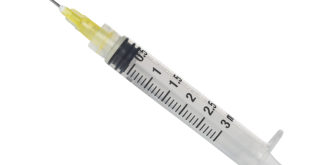Obesity is at the forefront of many health discussions in the United States.
According to 2012 US statistics from the American Heart Association, over 149 million men and women age 20 and older are considered overweight or obese. This means they have a BMI (body mass index) of 25 and higher.
About 75 million are classified as obese (BMI of 30 or higher).
What’s even more concerning, the trends show that Americans are getting fatter and it’s happening earlier on in life. About 1 in 3 kids are now considered overweight or obese. These numbers are about 5 times higher than they were in the early 1970’s.
These statistics, no doubt, have far-reaching implications as drivers of increasing health care costs.
But what about looking at this issue in the short-term? What are the risks for someone who is obese and is in need of surgery? What are some of the issues that may arise when someone suffering from obesity has to undergo anesthesia?
In this article, we will take a close look at the potential difficulties and complications that may arise when someone who is obese needs anesthesia. Just because someone is overweight (or obese even) doesn’t mean they will have issues with everything listed here.
There are different levels of obesity, different weight distributions, and personal medical profiles that will make each individual’s situation unique. This list is meant as a discussion of the potential difficulties that may arise in someone that is obese.
Let’s get started…
IV’s, Monitors, & Tables
Obesity increases the likelihood of having a difficult IV placement. Veins can be more difficult to visualize, making IV placement more difficult. In some instances, if a peripheral IV can not be placed, a “central line” may need to be placed in the neck, upper chest, or groin area. This can add to stress and discomfort prior to surgery.
It may also be a challenge finding a blood pressure cuff that fits properly (your anesthesiologist regularly monitors your vital signs throughout your procedure. This basic monitoring has greatly contributed to the safety of anesthesia). If an appropriately fitting cuff is not possible, your anesthesiologist may need to place an arterial line to monitor your blood pressure.
An arterial line is a small catheter, similar to the IV catheter, that is usually placed in an artery in your wrist that provides close monitoring of blood pressure. Additionally, small samples of blood can be taken and analyzed during surgery to more closely monitor a patient.
*** Arterial lines are also placed for other reasons that may be related to other issues in a patient’s medical history or related to the type of surgery performed (ie. larger, more complex surgeries).
A larger patient also creates some challenges when it comes to positioning for surgery.
First of all, the “everyday” OR tables have weight limitations that may be exceeded by morbidly obese patients. In these instances, a special table will have to be used.
Your anesthesiologist and the rest of the OR team take great care to protect and pad pressure points during surgery. This can be more challenging in an obese patient. And depending on the position necessary for the surgery and the length of time in the operating room, there may be an increased risk of nerve injuries related to positioning.
Luckily, most of these injuries resolve over days, weeks, and sometimes months in the event that they occur.
The Airway
Anesthesiologists are the experts of “the airway”. It is constantly on our mind when a patient is under our care as this is what keeps a patient alive: breathing in oxygen, breathing out carbon dioxide.
Obese patients may have a challenging or difficult airway.
There can be increased soft tissue surrounding the mouth, throat, and neck. As anesthesia is given and a patient loses his/her airway reflexes and ability to breathe on their own, this increased soft tissue can make it more difficult to keep the airway open and deliver oxygen to the patient.
And when it comes time to intubate a patient (place a breathing tube in the windpipe), this too may be more challenging. All the extra soft tissue can make it more difficult to visualize the breathing tube going into the windpipe.
After reviewing the medical history, an anesthesiologist will assess the patient’s airway during their physical exam. He/she will then make a plan for delivering anesthesia in as safe a way as possible.
Sometimes this will involve having a video laryngoscope available in the operating room. In this case, you will hardly notice a difference as this tool is typically used after you are “asleep”.
But sometimes your anesthesiologist may determine that the safest course is to proceed with an “awake fiberoptic intubation”. This method of placing a breathing tube can be more uncomfortable to a patient, and this is not lost on your physician.
Understand that if this is recommended for you, your anesthesiologist is doing it with your safety in mind. He/she will attempt to make the process as tolerable as possible. But ultimately it’s your life and safety that is foremost on their mind.
Once the breathing tube is properly placed, anesthesia will be induced as quickly as possible (usually within seconds).
Obstructive Sleep Apnea
Obese patients have a higher likelihood of suffering from obstructive sleep apnea (OSA).
This is a condition where the soft tissue surrounding your airway begins to narrow. This can cause frequent episodes of apnea (stopped breathing) when asleep, causing the person to wake up in the middle of sleep. This can lead to day time sleepiness, impaired concentration, memory problems, morning headaches, etc.
These changes can also lead to an increased sensitivity to respiratory effects of general anesthetics and other medicines that may be used as part of your anesthetic plan (eg. narcotic pain medicines).
Over time, OSA can lead to serious effects on the heart and the lungs. Be sure to tell your anesthesiologist if you have been diagnosed with OSA (though many have OSA and have not yet been diagnosed).
The Lungs
Fat accumulation on the chest and the abdomen makes it more difficult for the lungs to function properly. Without getting too technical, this can cause an increase in oxygen needs and more difficulty in the lungs delivering that oxygen to the body.
Carbon dioxide production is also increased due to the metabolic needs of the excess fat.
You can start to see the potential issues as an increased need for oxygen develops, while at the same time, it becomes more challenging to maintain an airway and deliver that oxygen.
Yet another reason your anesthesiologist has gone through four years of residency training to develop the skill and expertise to properly evaluate more challenging patient scenarios and guide them safely through their perioperative experience.
The Heart
Cardiac output goes up with increased weight, making the heart work harder.
Over time, as this process worsens, strain is placed on many parts of the heart. If not corrected, this can eventually lead to heart failure.
Obesity also accelerates atherosclerosis, or the build up of plaque within blood vessels. This compounds the problem as the narrowing (and sometimes blockage) of blood vessels prevents the delivery of oxygen and nutrients as the need continues to increase.
Gastrointestinal System
There may be an increase in volume of fluid in the stomach; and the fluid is often more acidic as well. The stomach may also be prone to delayed emptying. This can put obese patients at risk for gastric aspiration.
There liver is also prone to fatty infiltration and inflammation. It is not always clear, however, how this might affect (if at all) the metabolism in the liver of drugs used during surgery and anesthesia.
Kidneys and Endocrine System
Obese patients may have impaired glucose tolerance and/or a higher chance of type II diabetes.
This has implications related to the functioning of the heart, impaired wound healing, and other issues that will have to wait for its own article.
The kidneys are also impacted by weight gain, and it can eventually lead to impaired kidney function and contribute to the development of high blood pressure.
Drugs (Pharmacology)
This can get highly technical very fast.
The bottom line is that increased adipose tissue may alter/affect the way a medicine works. This often depends, not only on the patient’s characteristics, but the various properties of the drug itself.
Your anesthesiologist is balancing all of this information when deciding which medicines to give, when to give them, and how much to give.
Your anesthesiologist is trained to evaluate and care for patients of all shapes and sized. Certain conditions may make our job more challenging.
The best course is to be upfront with him/her about all of your medical conditions and any concerns you might have about the anesthesia plan for your planned procedure.
Know that we are doing all we can to make your experience as safe and as comfortable as possible.
 Anesthesia Myths: Get the Facts, Lose the Fear | Your #1 Anesthesia Resource in Simple language
Anesthesia Myths: Get the Facts, Lose the Fear | Your #1 Anesthesia Resource in Simple language




